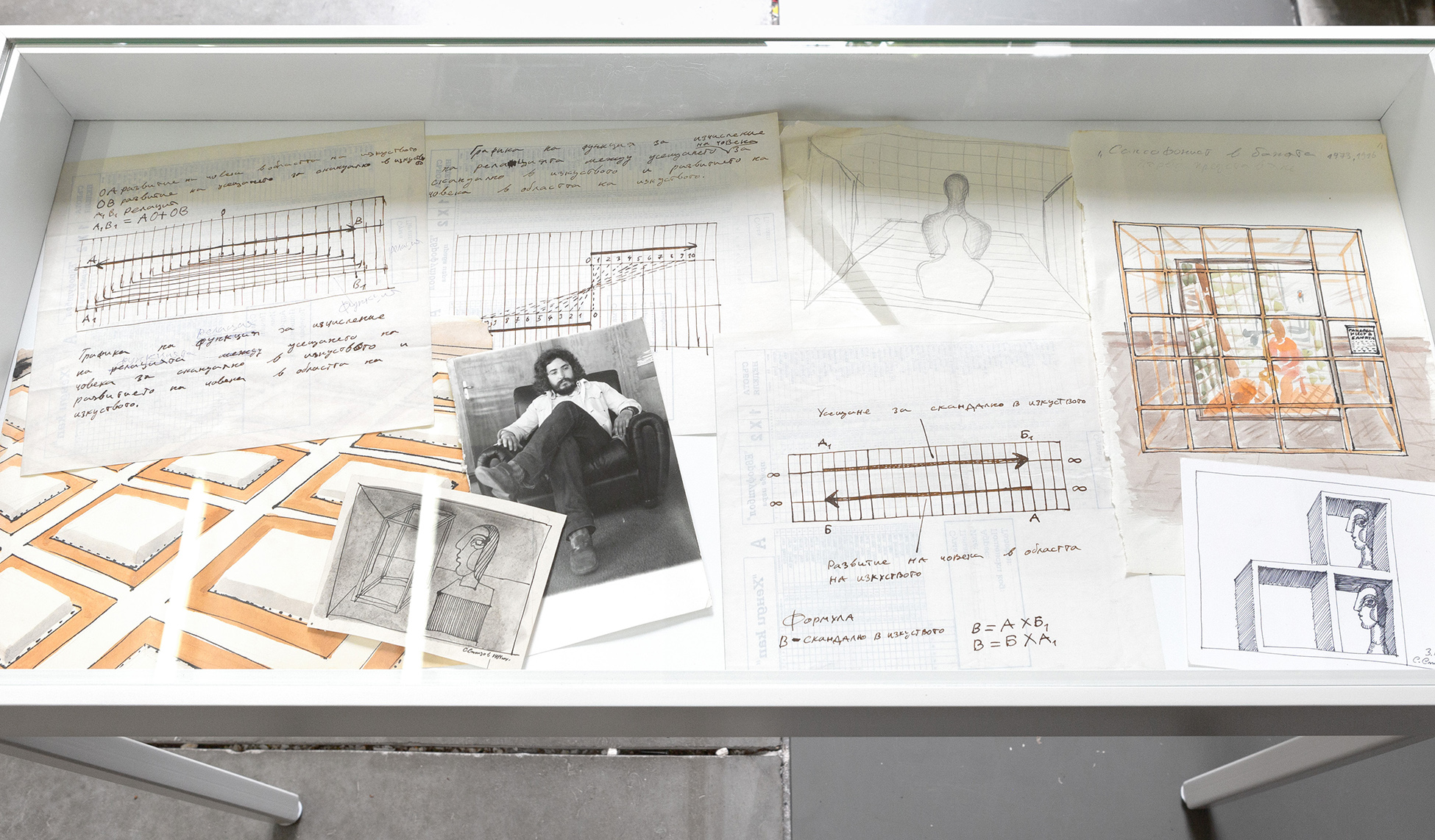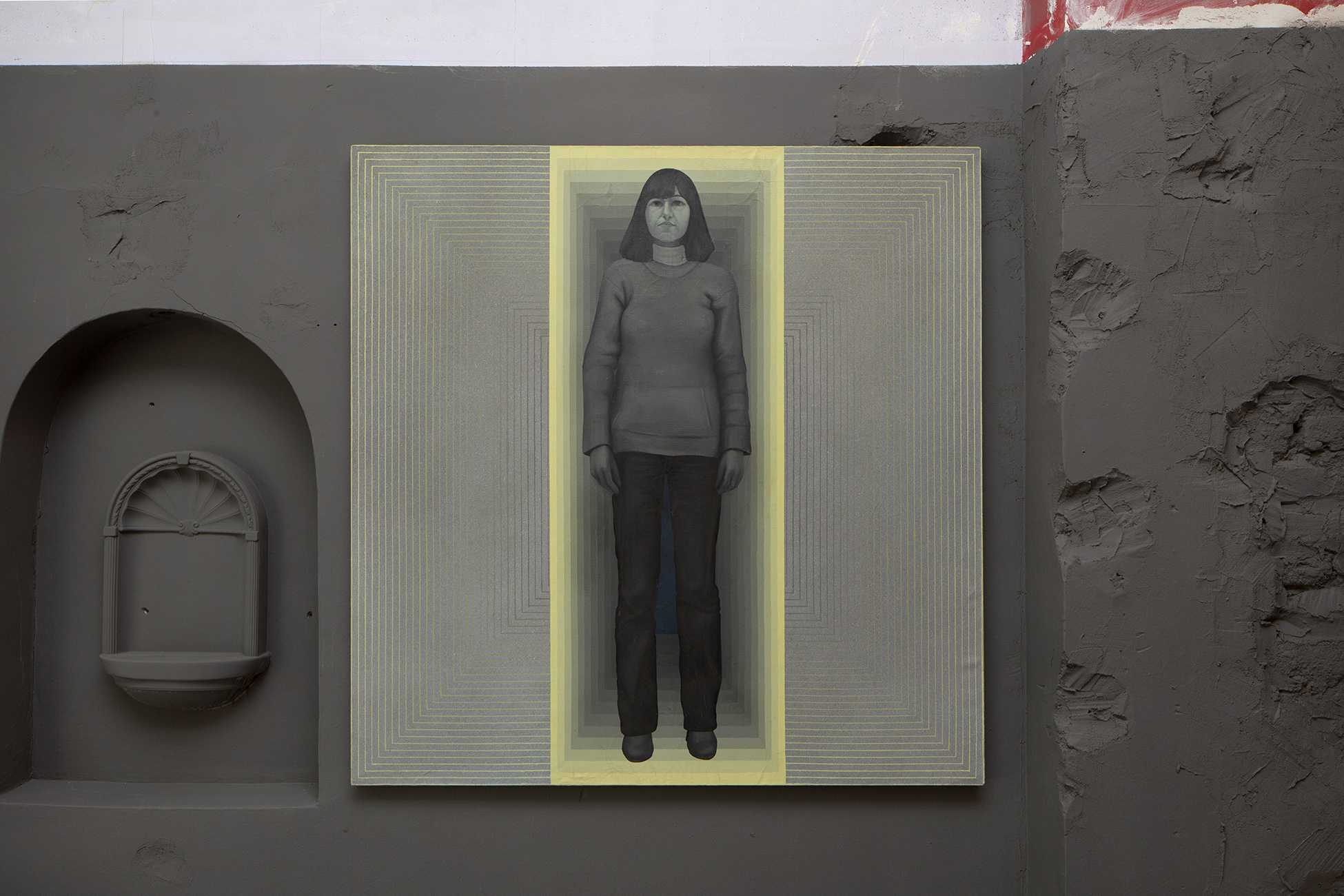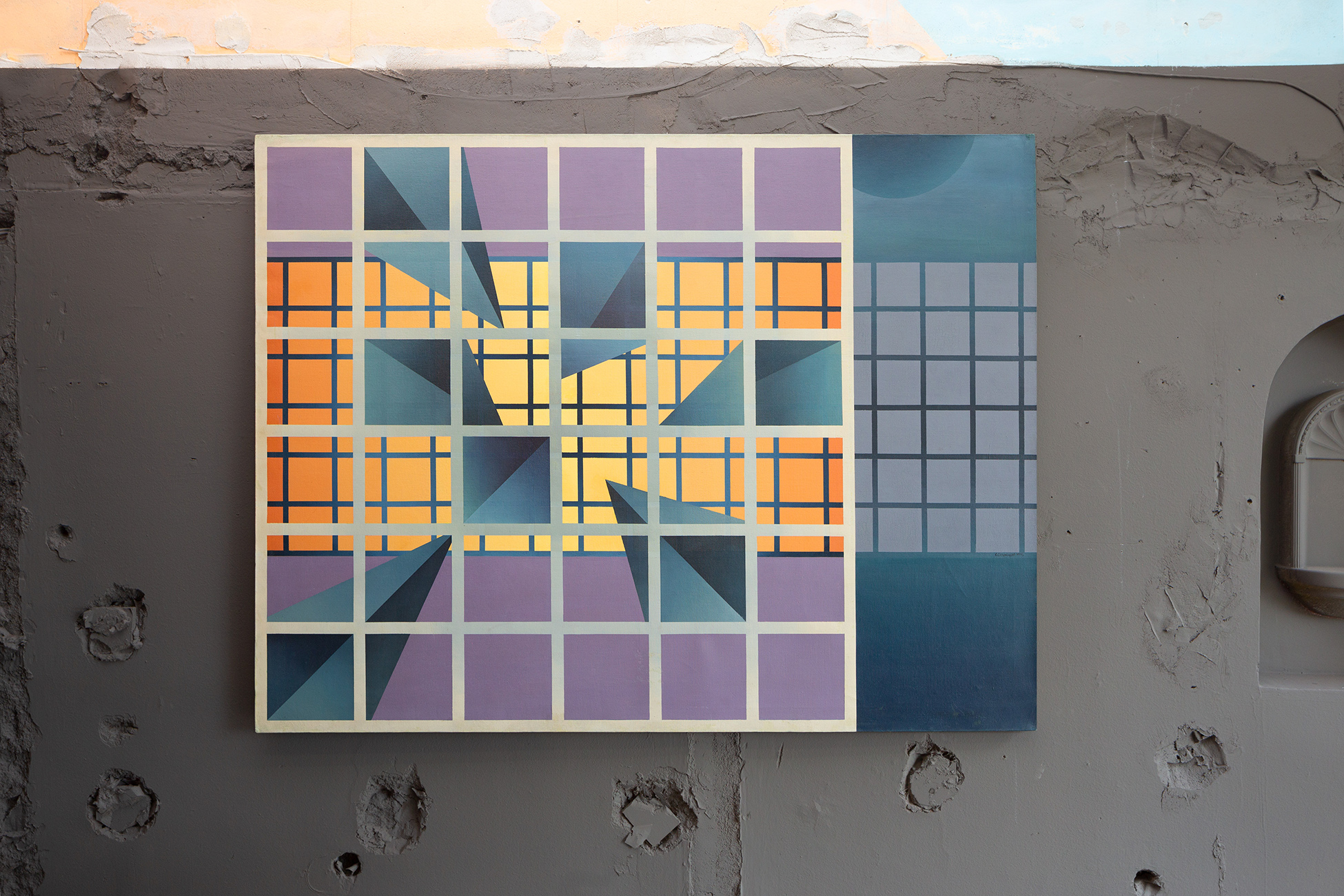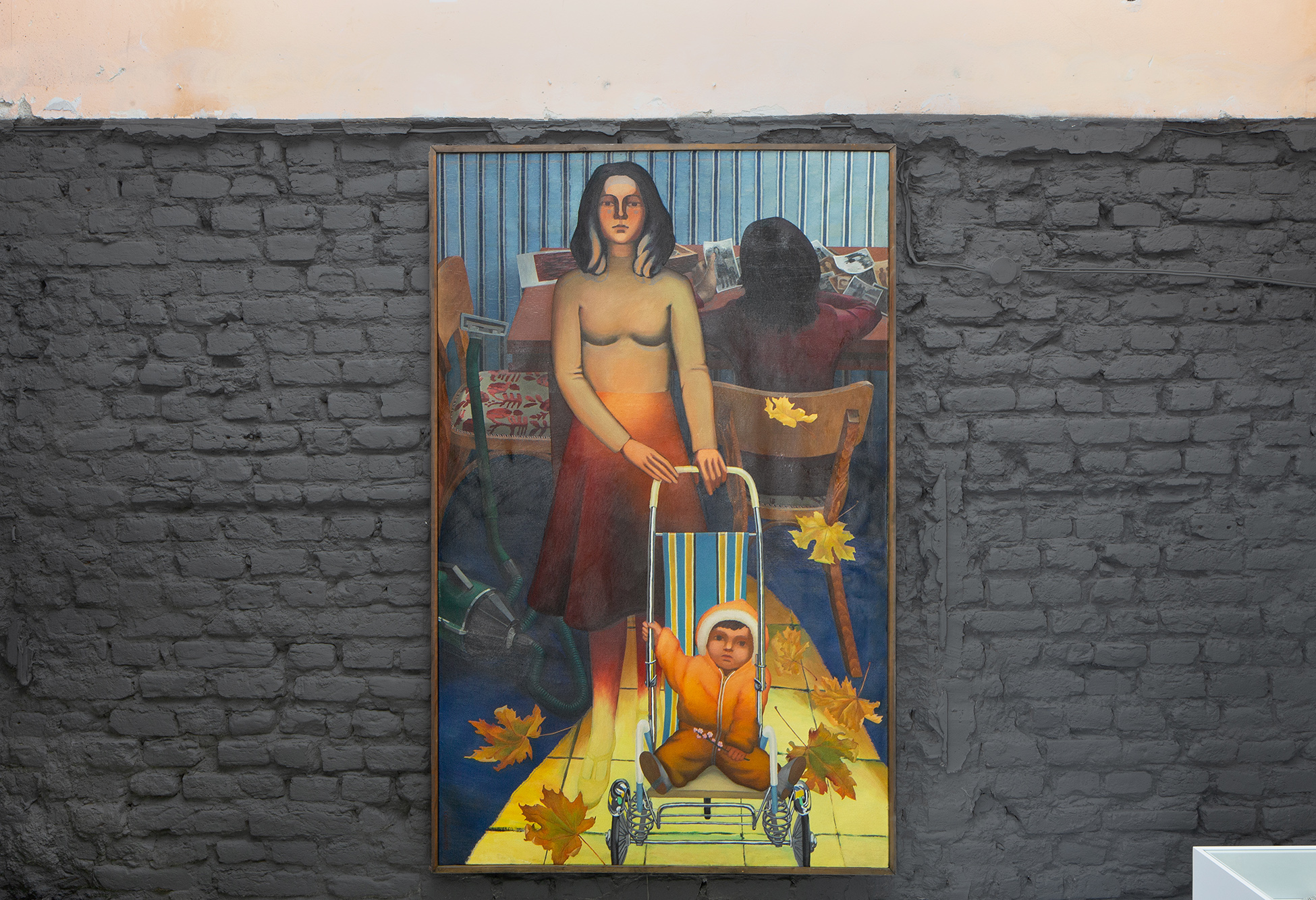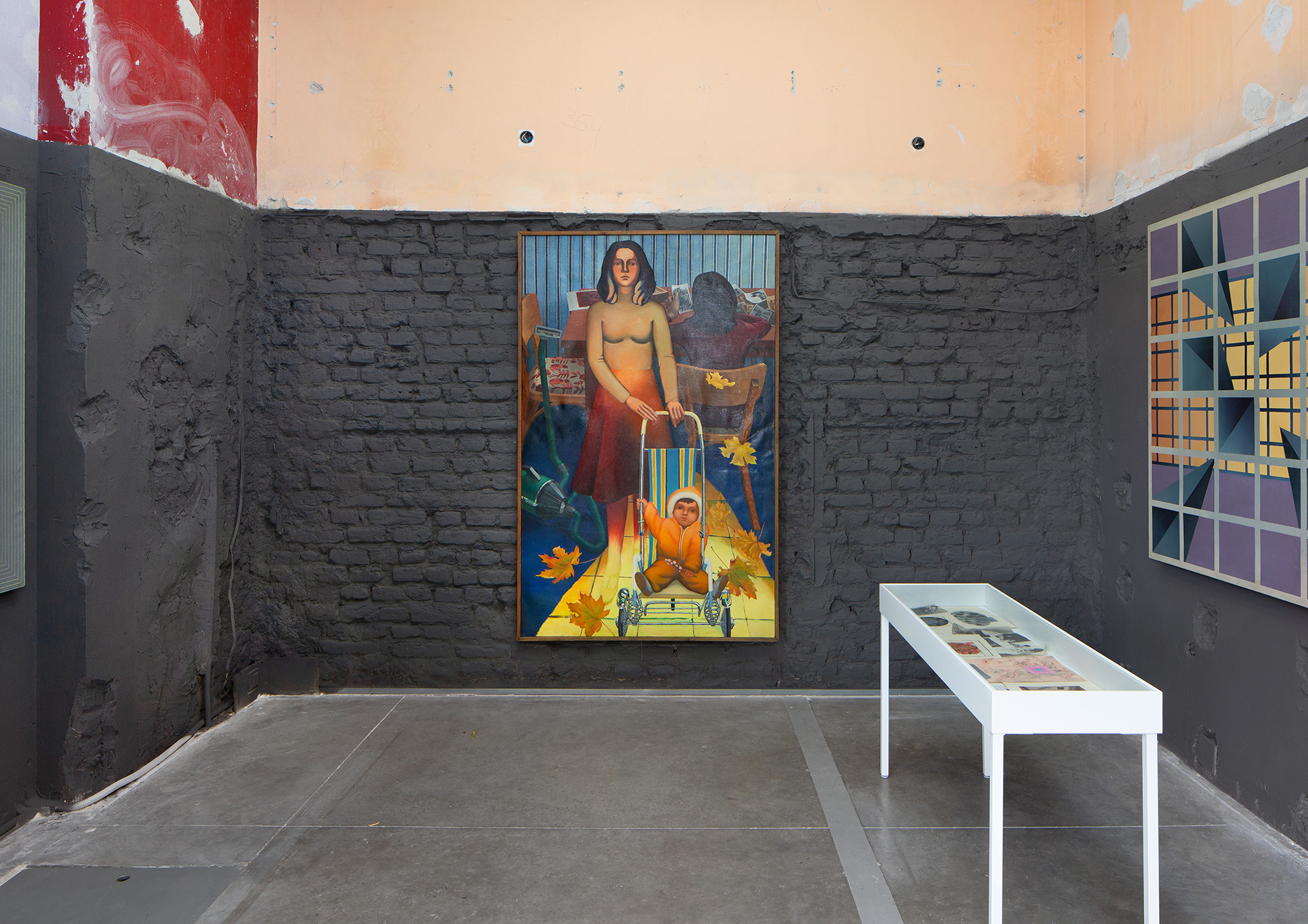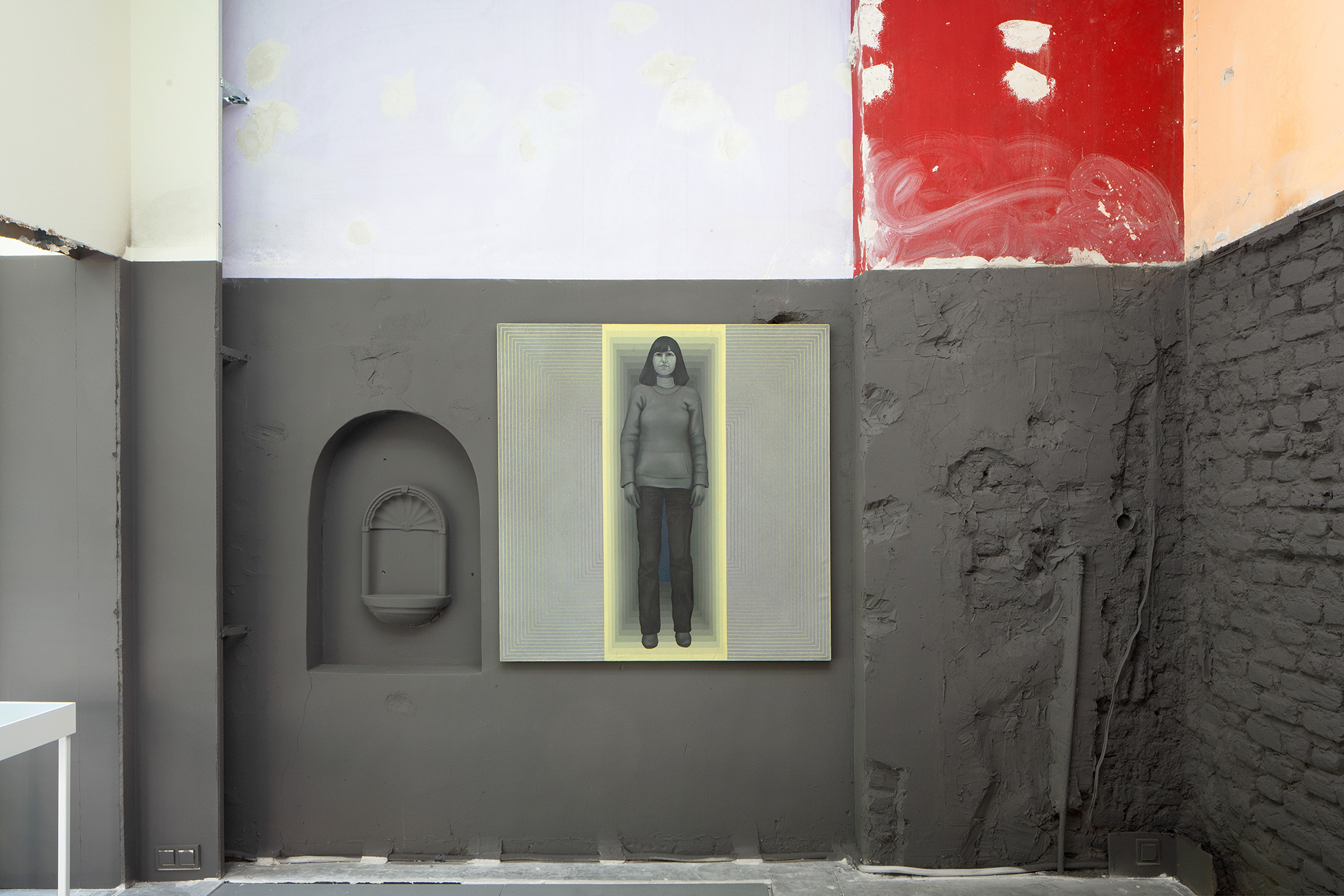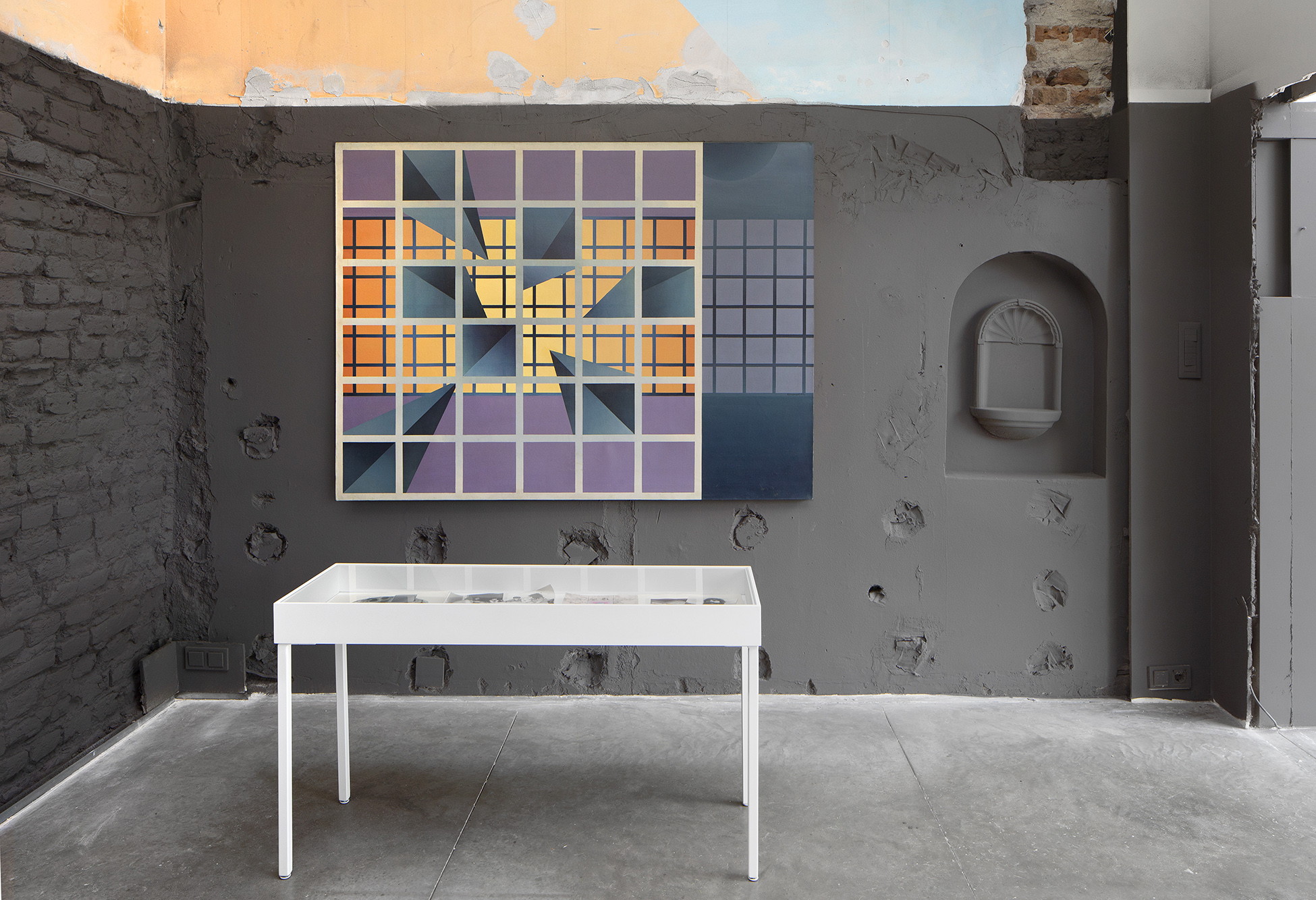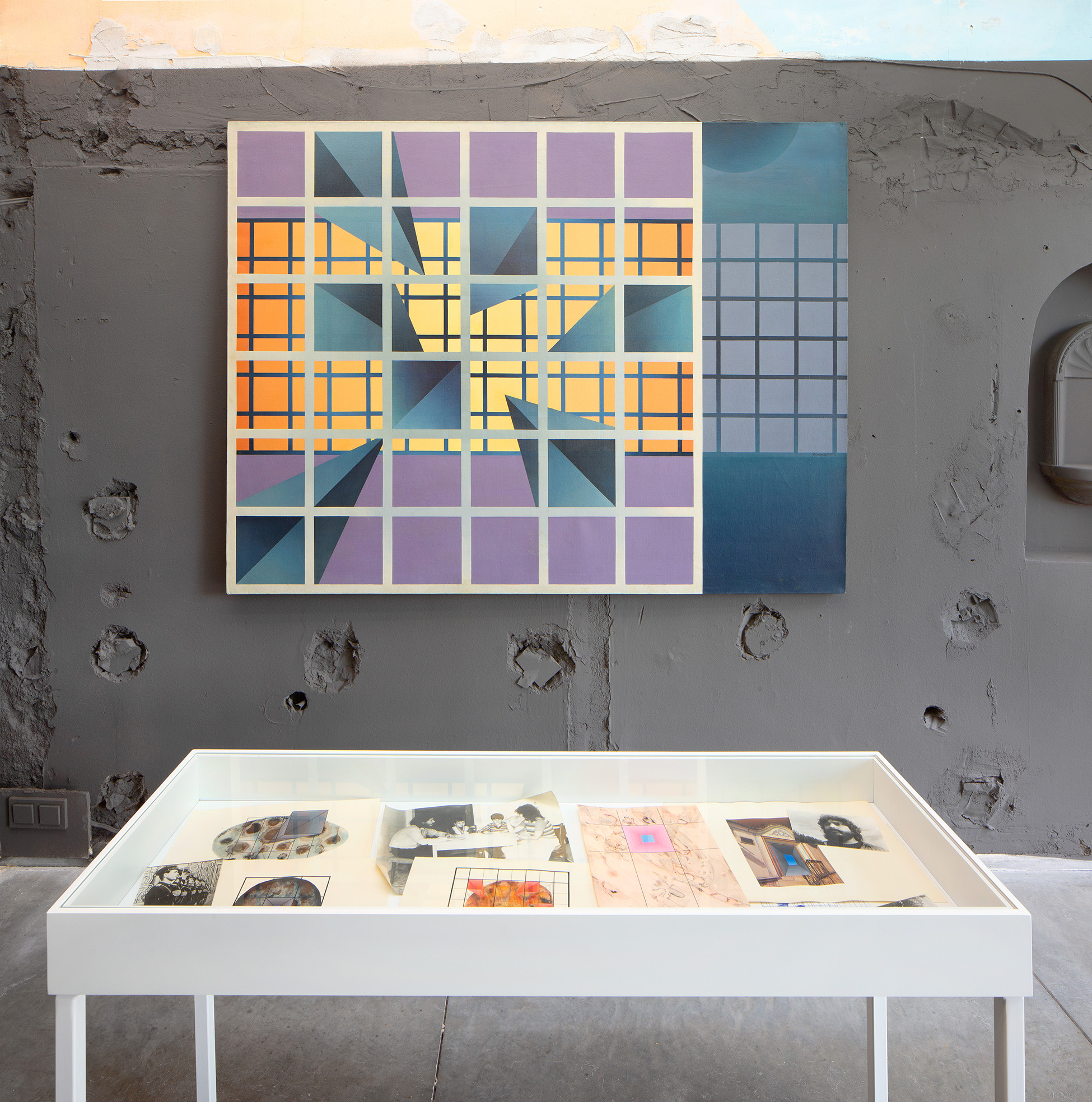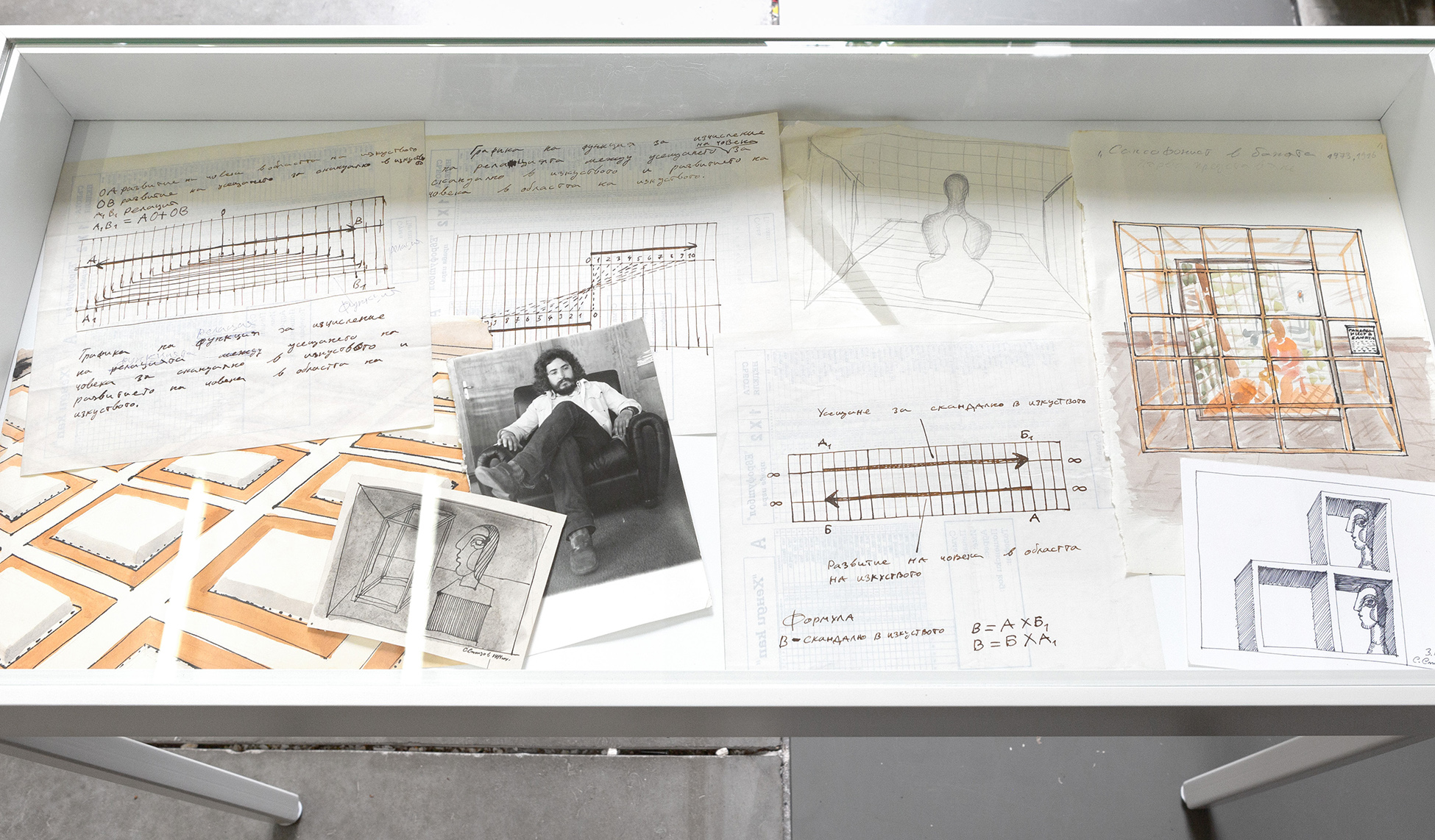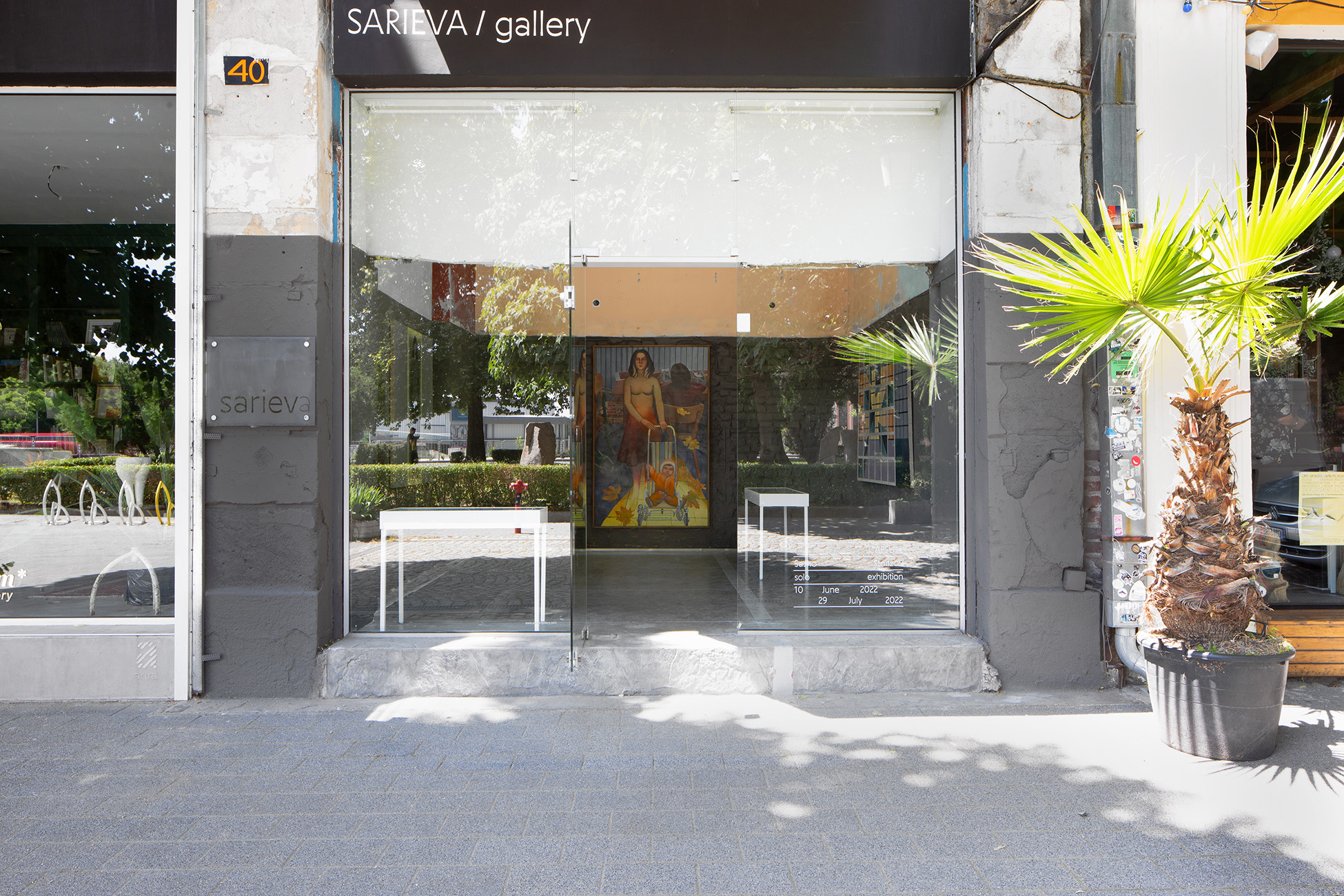10 May 2022 – 30 June 2022
Capsule
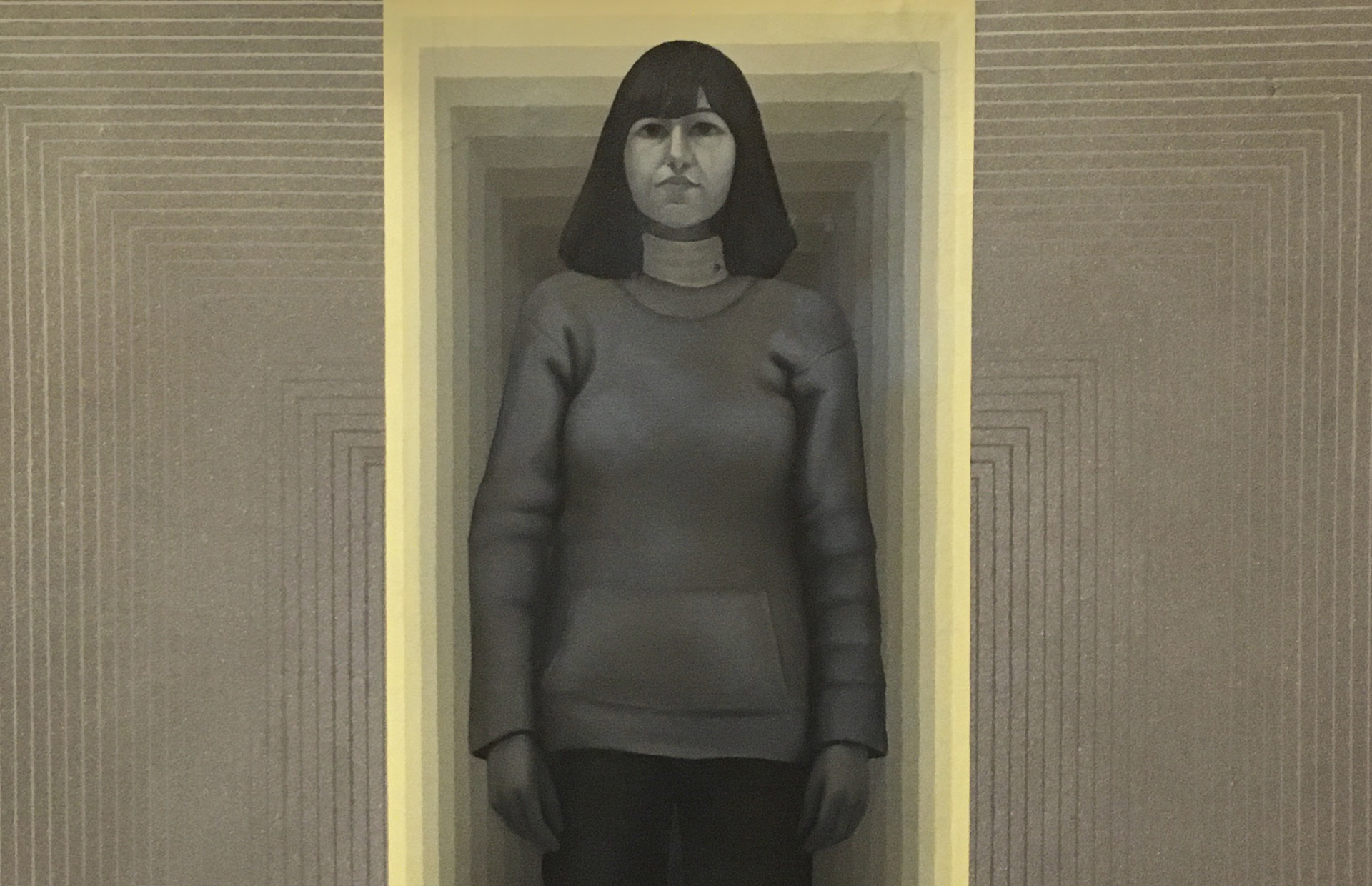
Sarieva Gallery is pleased to present the exhibition “Capsule” which puts on display several hitherto unseen paintings by Sasho Stoitzov from the 1970s and 1980s. The exhibition follows the gallery’s line of interest in discovering and presenting an artist’s early works, thus contributing to the history of contemporary art. The exhibition is realized with the author’s collaboration and will be opened in his presence.
Sasho Stoitzov was born in 1952 in Blagoevgrad. In 1971, he graduated from The National Art High School in Sofia. After his graduation, he returned to his hometown where he set up his own studio which preserves his earliest works to this day. The studio became a meeting place for artists and friends, a free space for listening music outside the communist reality that prescribed Bulgaria’s social and artistic life up to 1989. During this period, Sasho Stoitzov experimented with the technical, thematic and presentational aspects of his paintings. A large portion of his work was rejected by the juries of Collective Art Exhibitions which at that time were the main venues where authors could show their works within the state-controlled art system. It was only natural that he found his way into the avant-garde domain of conceptual artistic activities right before of the Transition and participated in some of the very first manifestations of the so-called “unconventional arts” in Bulgaria. Subsequently, Sasho Stoitzov founded the artistic collective “Blagoevgrad Group” – an independent artistic enterprise. In 1988, he and the group staged the legendary artistic performance and exhibition „11.11.88” – one of the first conceptual art forums in Bulgaria, and in 1989 he organized the first national exhibition of “unconventional” art – „11.11.89”, presented in Blagoevgrad’s Art Gallery. Stoitzov participated in some of the most important exhibitions that contributed to development of Bulgarian art such as: “Earth and Sky” (1989), „Cream-Art” (1992), „N-forms? Reconstructions and Interpretations” (1994), „Export-Import” (2003) etc. From 1998 onward he lived and worked in New York. Later, he returned to Bulgaria in 2010 and is today an active participant in the country’s artistic life, gradually reestablishing his activities in Blagoevgrad by organizing residences and exhibitions for young artists.
Like several other artists who began their creative endeavors during the 1970s and the 1980s and whose works were re-discovered only recently (they likewise fall into our scope of interest), we may assume that with his earliest works Sasho Stoitzov invented a specifically local sotz-pop-art. It stands far from the familiar Western pop-art of the capitalist consumer society – even though it employs familiar subjective and critical means of expression, it has its foundations in the socialist reality. In this sense, today Sasho Stoitzov has become integral to the research field of current art studies on 1960-70s art in Easter Europe, Latin America, The Middle East and Asia that trace these tendencies already through the distance in time. The processes of formation and emanation of Sasho Stoitzov’s artistic language organize the focus of the exhibition “Capsule” in Sarieva Gallery.
Sasho Stoitzov’s art matured as early as 1973-1974 when he was 21-22 years old at his studio in Blagoevgrad. His style is pictorial, vivid, surreal, wild, diverging from and countering traditional artistic expressions and even human behaviors. His personages are energetic individuals that differ from all others, they are dreamers and rebels inhabiting both the familiar reality and one of their own, their freedom is tangibly manifested. Notable works from this period are “Saxophone Player in the Bathroom” (1973) and “Untitled, Spring” (1974) which is to be presented for the first time at the present exhibition. Both artworks display a human figure situated in a domestic socialist environment, yet the meaning and the function of space in each of them are displaced by other connotations. In the first one, the bathroom becomes the musician’s only place for free self-expression. In the second one, the mother with the stroller stands on the verge between the outside and the inside, between the home full of photographic memories and the stroll along the autumn street; autumn leaves fall, while the baby is holding a spring bough. What is also striking is that the author chose to use purely artistic means to situate the figures on a checkered tile surface, irrespective of whether it represents the floor inside the home or the street pavement. Although literal and not abstract as in his later paintings, the metaphor of the geometric grid symbolizing both personal space and the system is manifested here for the first time. Both paintings received a ban on display at collective exhibitions.
The peak point of Sasho Stoitzov’s early period was during the 1980s when he produced large photorealistic compositions and portraits distinguished by their cool detachment. Amongst such artworks are: „A Family” (1979), „Andrei Program” (1980), „Program Lyubima” (1980), “Bratanov Program” and the rest of the “programs”, “Conclusion” (1984), “Energy Conservation” (1984) etc. In these examples, the personages are more reserved and do not differ from the rest, they are typical representatives of society. We could say that their duality is more psychologically elusive, they are binary in terms of meaning. The paintings display a specific suspended tension, while their titles are reminiscent of the conceptual capsule of time in which the artist develops his artistic engagement. This capsule is, on the one hand, unquestionably related to the strictly formulated socialist being of each citizen, and on the other, it bears on the world tendencies of social and technological development that we have long considered too distant from the experience of Bulgarian artists at the time. In this period, Sasho believed that humankind was part of a universal digital programming which could be reproduced not only by human means. He says he feels different while making these artworks and seeks to fashion them as if they were mechanically produced, without personal emotion or narrative. The technique and the “production” process themselves are invented by the author and include documenting friends of the artist with a camera, projecting images onto the canvas with a slide projector, the use of rulers and stickers, spraying background paint with a vacuum cleaner, over-painting in a realistic style. The human figures seem placed on endless planes, in suspension, in rhythmic alternations, which we can interpret nowadays, using our already digitally expanded and scientifically advanced understanding, as waves, vibrations, holograms, sets etc. The artworks seem not made by human hand and ahead of their time. The exhibition in Sarieva Gallery will present two works from this period which, surprisingly, have not been shown to the public so far: “Program Lyubima” (1980) and “Untitled” (1979). While “Program Beloved” can be conceptually related to the other portrait works of the period, the purely geometric “Untitled” seems to belong to a particular program, thus enriching the interpretation of the author’s collective work. Stoitzov comments on it: “this work represents the breaches into the system”, while we may add – just as every person could prove to be namely such a breach.
Following this artistic period, the author seemingly left the domain of painting for a while and moved on to objects and installations of domestic character, realized around 1988 (such as “Boom in Power Engineering”, 1988 and “Hole in the Parquet”, 1989).
The exhibition “Capsule” additionally extracts from the archive smaller portraits and artworks by Sasho Stoitzov from the 1970s, as well as concept drawings and materials that accompanied his work, all of which would prove to be a resource of interest for his fans as well. The exhibition gives a condensed view of a keen artistic personality that grows boldly and quickly in a time we traditionally consider as slow-paced.
The exhibition “Capsule” is a natural development in the rediscovery and presentation of Sasho Stoitzov’s early work by the organizations cooperating with Sarieva/Hub through events, texts, group or solo exhibitions being realized since 2011.
Press
Sasho Stoitzov at Sarieva, Art Viewer, 25.7.2022
